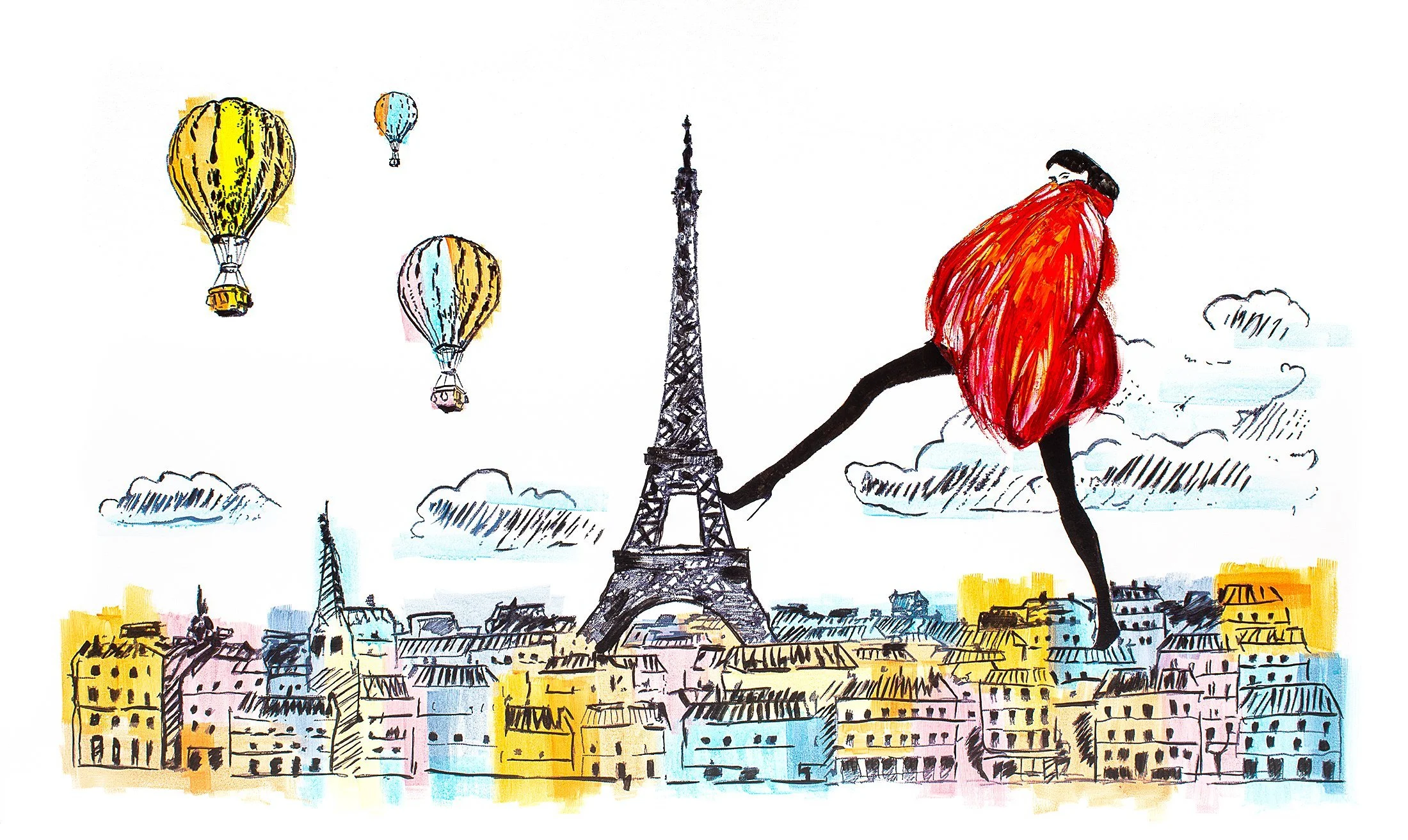Thesis
Growing up, I would visit art museums and flip through art books filled with paintings, illustrations, and photographs of women representing femininity, empowerment, sexuality, and fertility. These representations were in the form of characters and roles that women have played throughout society, such as caregivers, house maidens, or deity figures.
It is fascinating to see how women's roles evolved. In the early 1900s, women were empowered not by the fact that they could bear children, but by being part of the workforce. No longer were they only symbols of sexuality, purity, and love.
The early 1900s largely influence the painting style and themes I focus on for my paintings, such as urban growth and the excitement of urban life. Showing the city these characters live in is very important because it sets the stage for where these women live, but it doesn't define them. That is why they are scaled to look bigger than the city. These women will work, live, fall in love, and thrive in these cities, but they are unique individuals. Their space and occupation will not give them an identity. Roles, ideals, or expectations will not limit them from growing or expressing themselves as they see fit.
P R O C E S
My fascination with women started at a very young age. When I wasn't creating paintings from imagination, I was copying paintings and photographs from artists such as Picasso, Frida Kalo, and Cindy Sherman. For hours, I would illustrate women who represented my future self and women I admired.
Not all, but most women put a lot of thought and emotion into how they dress and portray themselves to the world surrounding them. It's as if their bodies are a fresh canvas where clothes are their chosen art medium. Those unique women that treat their wardrobe like an art form are the ones I look out for in the wild.
I L L U S T R A T I O N S
These compositions are illustrated with pencil, pen, and marker. When I find those unique women, I illustrate them several times in different poses and urban spaces until the composition feels right. At times, I will work on my designs using Adobe Photoshop or Adobe Illustrator.
After many sketches and hours of going through my creative process, I finally chose the best option to draw on a canvas with acrylic pens. After the illustration dries on the canvas, I spray a sealer to ensure the sketch won't be disrupted when I apply acrylic paint.
C O L O R
Each color palette is chosen very carefully to represent the feeling of the city that I'm illustrating, and it also needs to go with the mood of the main character. Finding that balance is very hard. Choosing the wrong color can ruin an excellent illustration. After several colored illustrations, I decide on one final colored sketch to use as a reference for the final painting.
Acrylic paint is applied with various brushes and palette knives, covering part of the illustration. The amount of acrylic used for each piece varies depending on the painting style. If I want a scene to look like it’s further away from the character I use ink and watercolor.



